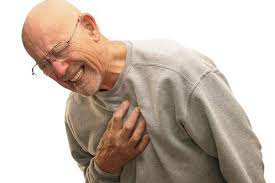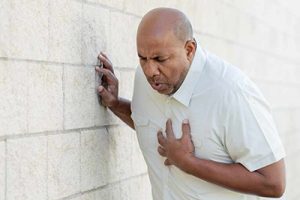Numerous people suffer from diseases that are caused by the lifestyle they follow. One of the major conditions which is often noticed is one that involves the heart, its muscles, valves, vessels or the internal pathways responsible for muscular contraction. Among the most common diseases of the heart include the following:
- Coronary artery disease.
- Heart failure.
- Cardiomyopathy.
- Heart valve disease.
 What Precisely Is A Heart Attack?
Advertisements
What Precisely Is A Heart Attack?
Advertisements
 Every year, over 600,000 people die from heart disease in the United States. A heart attack is a condition that occurs when an area of the heart tissue does not receive the required blood supply because the coronary artery is blocked by a blood clot. The diminished supply of blood can damage or kill the heart tissue.
Every year, over 600,000 people die from heart disease in the United States. A heart attack is a condition that occurs when an area of the heart tissue does not receive the required blood supply because the coronary artery is blocked by a blood clot. The diminished supply of blood can damage or kill the heart tissue.
Therefore, it is essential for the individual to receive an emergency treatment to reduce the risk of loss of heart tissue. The loss of the tissue that is precipitated by the blockages can cause shortness of breath, chest pain, weakness, and even death. However, timely treatment has been shown to reduce the number of fatalities from heart attacks during the recent past.
“I’m giving life lessons and tips on how to take care of your emotional heart because heart disease is the number-one killer in America.” — Leeza Gibbons
 Symptoms Of A Heart Attack
Symptoms Of A Heart Attack
Given below are the early-warning signs of a heart attack:
- Chest pain that may spread across the back, neck, arms and the jaw.
- Dizziness.
- Rapid or irregular heartbeats.
- Shortness of breath.
- Nausea and vomiting.
- Some people may exhibit signs of anxiety or heartburn.
- Weakness.
The symptoms, although being similar may be exhibited differently by women who may not complain of chest pain. Women usually report a different set of symptoms for a heart attack, including the following:
- Cough.
- Heartburn.
- Loss of appetite.
- Arrhythmias.
- Malaise.
The symptoms reported by women generally cause delays in diagnosis if the practicing physician does not consider them as possible signs of heart disease. The delay can be harmful to the patient because it can cause further damage to the heart tissue and even prove fatal.
Can you believe that approximately 17% of American children aged 2 to 19 years are obese? How about this fact:
“Approximately 60 percent of overweight children aged 5 to 10 already have at least one risk factor for heart disease? We are all to blame for this – parents, schools, kids – all of us.”-— Alison Sweeney
 What Causes Heart Attacks?
What Causes Heart Attacks?
The reduced blood flow to the heart is the primary reason for heart attacks. This is caused when plaque partially obstructs coronary arteries. The reduction of blood to the heart may induce chest pain, which is a warning sign of potential problems of the heart. Plaque can also trap tiny blood clots to block the coronary artery completely within an instant, resulting in a heart attack.
 How Do Plaque And Blood Clots Result in A Heart Attack?
How Do Plaque And Blood Clots Result in A Heart Attack?
Plaque often occurs within the coronary and the carotid arteries. Some types of plaque may be firm and hard on the exterior but soft and sticky on the inside. When the hard shell-like cracks open, blood components such as platelets along with small clots comes together to form a large clot, which can effectively block the flow of blood through the artery. The heart tissue that is below the clot suffers from the lack of blood to become damaged and may collapse.
 Treatment
Treatment

Apart from heart attacks, individuals may also suffer from other abnormalities as a result of blocked blood flow. It is highly possible for individuals to have a sudden cardiac arrest, which may lead to death because of the erratic nature of the electrical signals from the heart. This can stop the heart from pumping blood effectively. In such cases, death usually follows within a matter of minutes after the heart stops functioning. In cases like these, restoration of the organized electrical activity can be conducted with rapid coronary pulmonary resuscitation.




